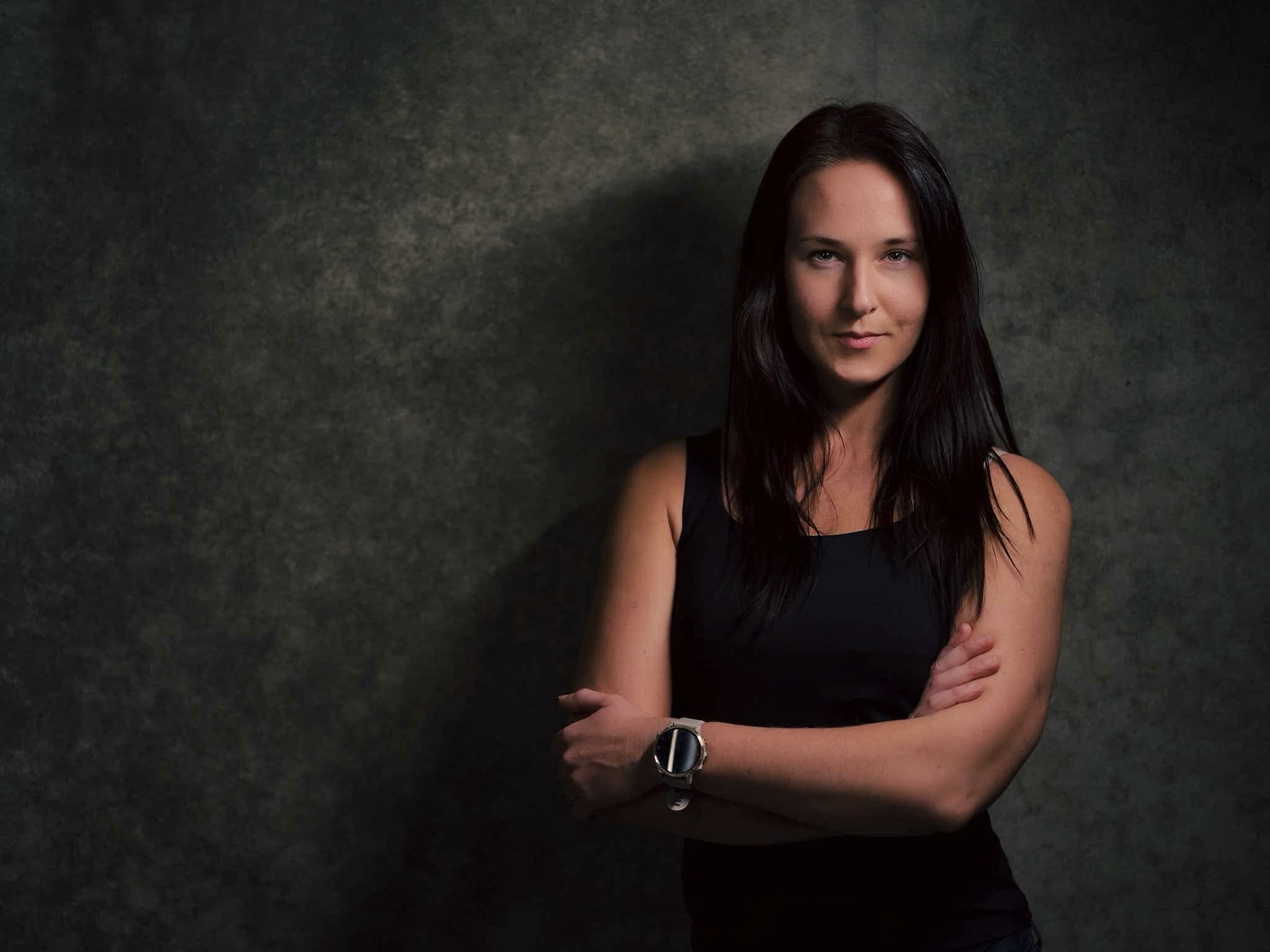Meet Sweden’s fastest girls
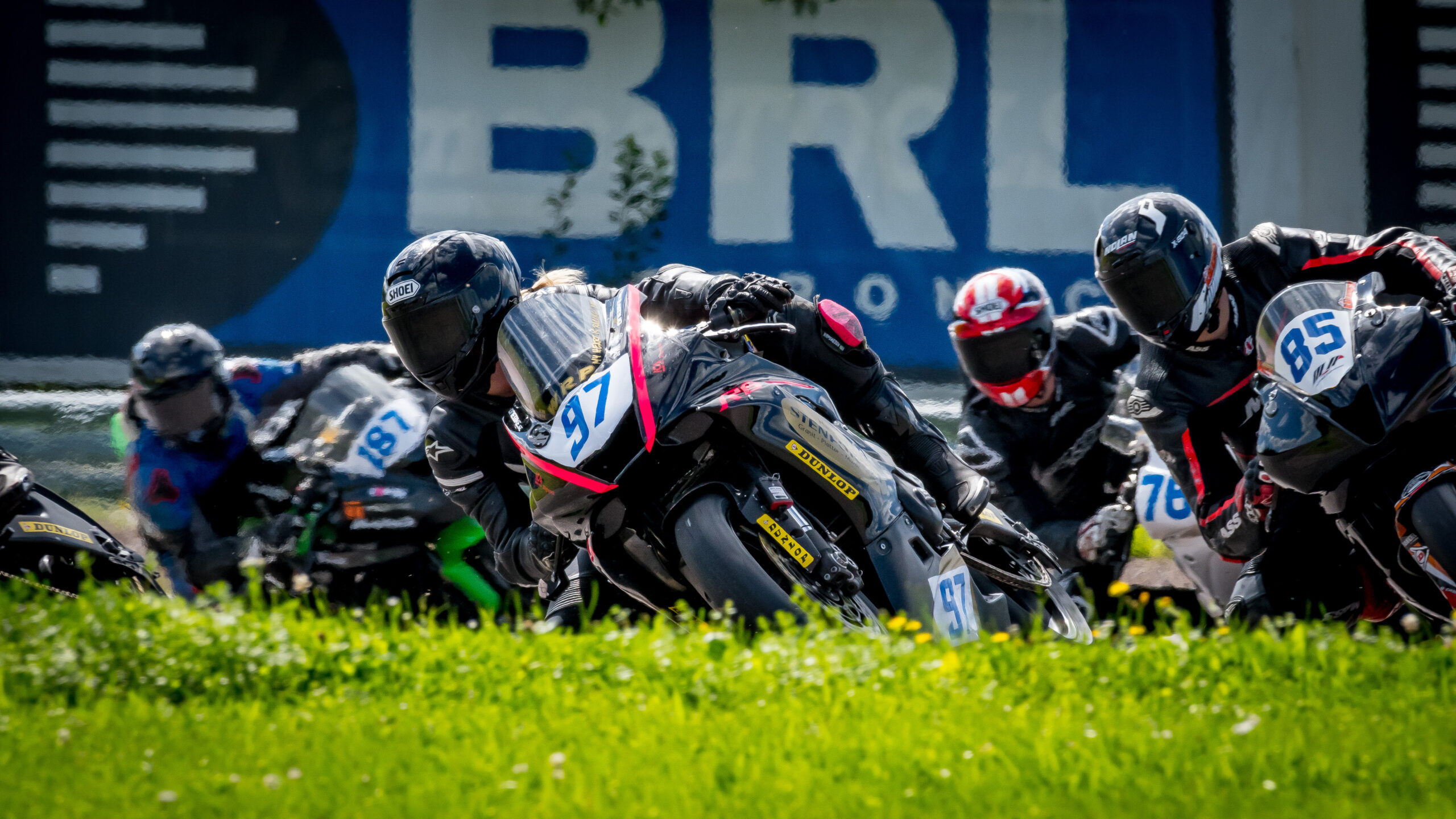
When the helmet goes on and the bike rolls out onto the track, Jessica knows exactly what needs to be done. For Saga, nerves pulse right up to the moment the starting lights go out. Then it’s all focus and determination. The feeling of lining up on the grid is hard to beat – and even harder to describe to someone who hasn’t experienced it themselves. But let’s start from the beginning.
From school car parks and Formula 1 – to Sweden’s Racing Elite
Jessica Feder was born in Portugal and grew up abroad, mainly in Portugal and Brazil, with a Swedish mother.
Her passion for motorsport started early, watching Formula 1 with her dad – despite his lack of interest in two wheels (sadly, Jessica’s father has passed away, but it’s easy to believe he’d have come to love bikes through her passion). Perhaps it was a motorbike-riding female cousin with a Ducati Monster who planted a subconscious seed of inspiration.
After moving to Gothenburg as a teenager, Jessica began practising on motorbikes at 18 with her stepdad. It took her seven years to get her full A licence, but once she did, her love for bikes exploded.
Club races were the gateway, followed by endurance events, and in 2023 – after some persuasion – she entered her first Swedish Championship. The following year, she advanced to the elite class, and she’s never been more motivated.
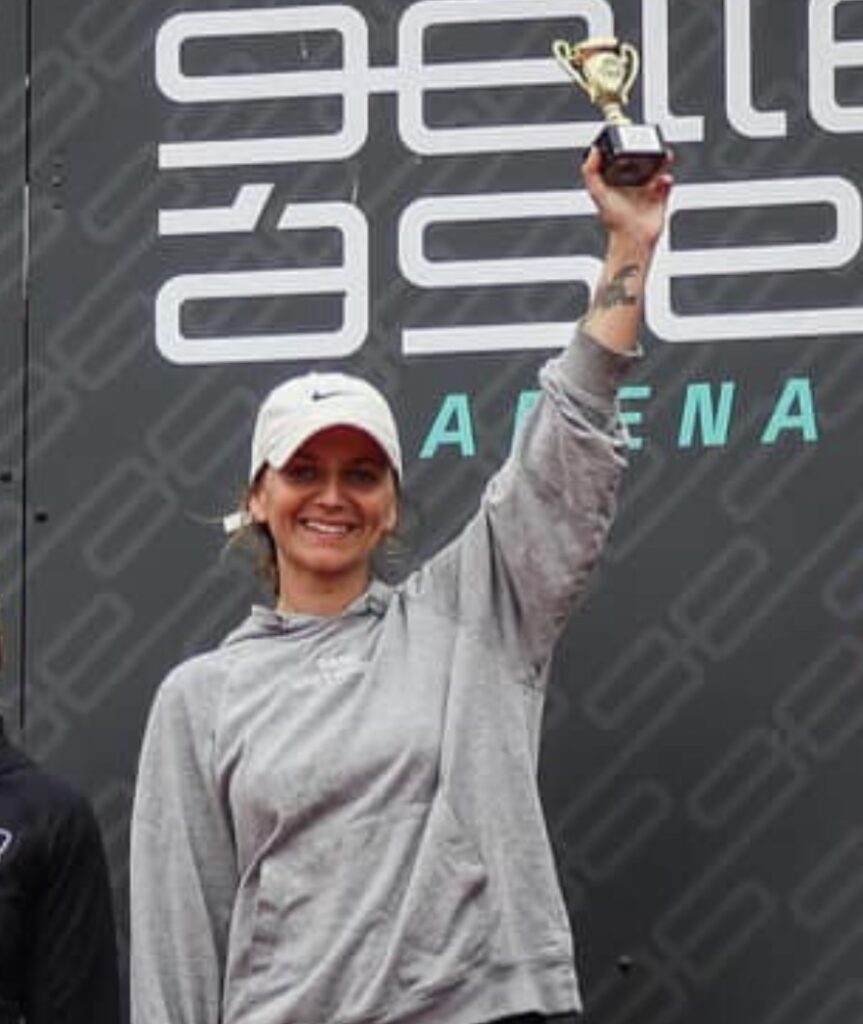
#4 Jessica Feder
Age: 35
Lives in: Norrköping
First bike: Ducati Monster
Racing since: 2021
Competes in: Swedish Championship Elite 600
Rides: Yamaha R6
Motto: Do more, think less
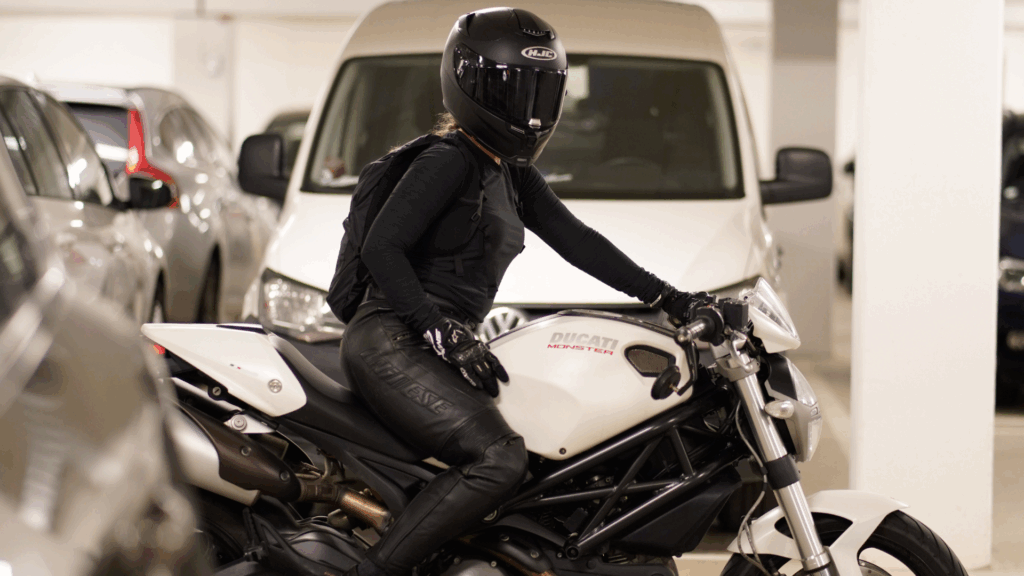
Saga Johansson, from Jönköping, had a very specific love at first sight moment when it came to motorbikes – watching a guy ride off from the school car park one day.
“I just knew – I had to do that too,” she says.
With a light motorcycle licence, she spent years unaware of the possibilities of track riding. But after a gift of a basic training course and two track days, she and her dad decided to go all in: get licensed and start racing.
Mum needed a bit more convincing – but it worked.
Saga debuted in both endurance and the Swedish Championship in 2021. By early 2023, she’d reached the elite level.
At first glance, Jessica and Saga may seem like two very different riders – but both share a deep belief that roadracing is more than just a sport.
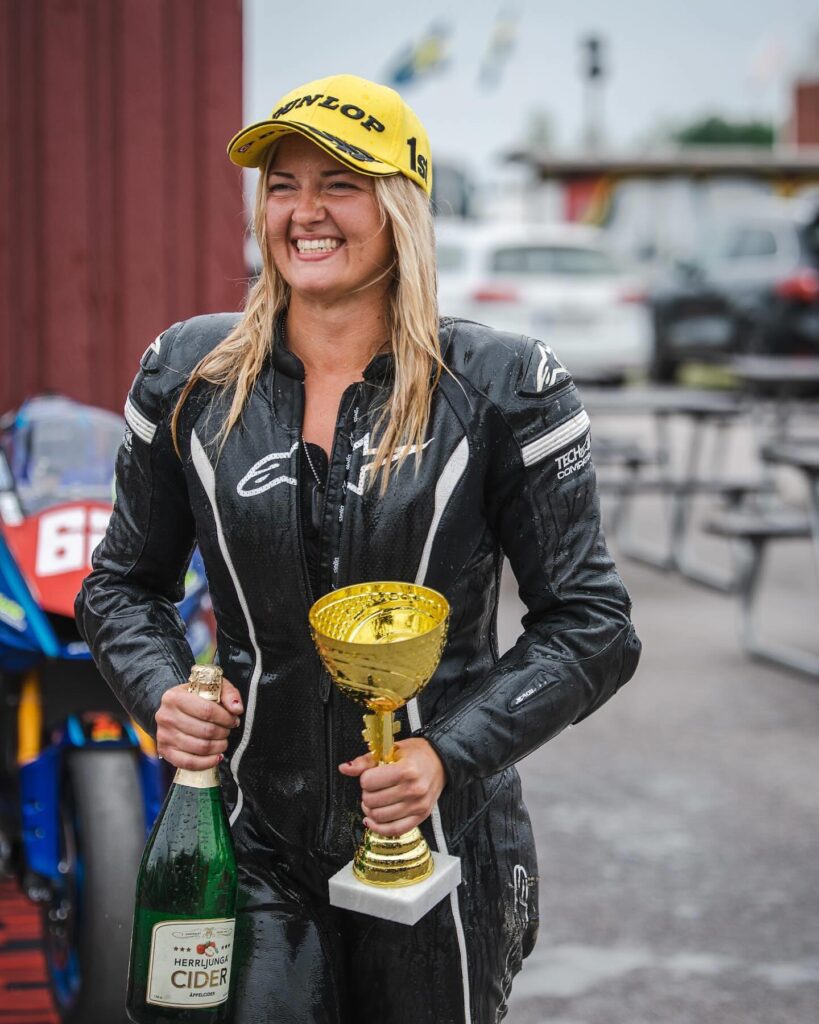
#97 Saga Johansson
Age: 28
Lives in: Norrköping
First bike: Yamaha YZF-R125
Racing since: 2021
Competes in: Swedish Championship Elite 600 and Endurance
Rides: Yamaha R6
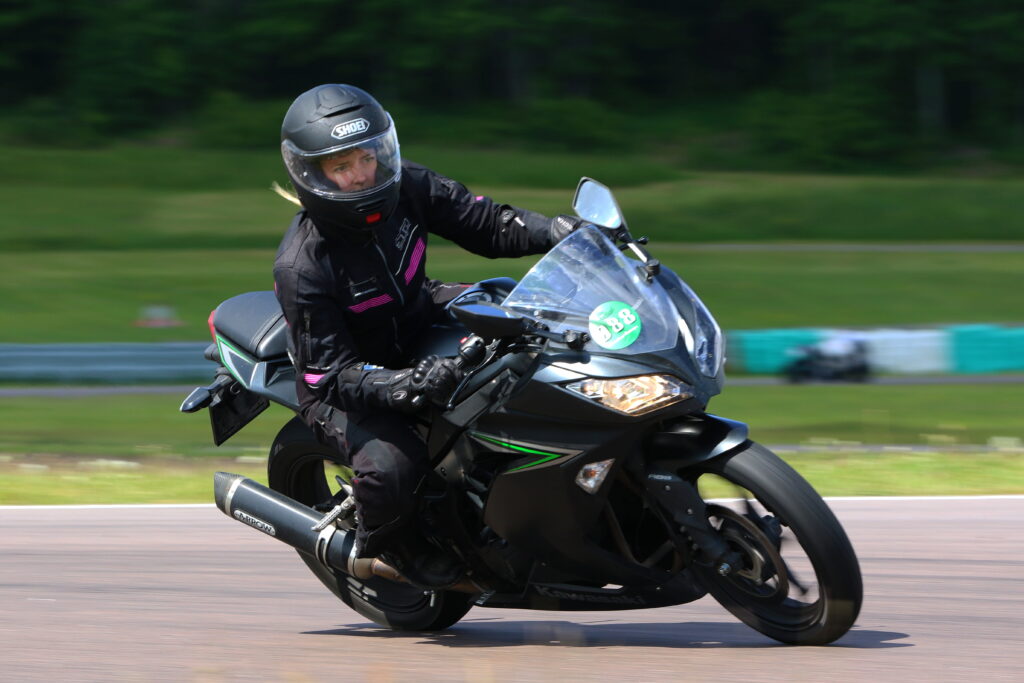
Racing as a woman in a male-dominated world
“I’ve never felt excluded in roadracing, either in Sweden or abroad,” says Jessica. “There are different kinds of fast riders, and in this sport, everyone helps each other – regardless of gender or level.”
Saga agrees, though she occasionally notices others’ assumptions: “You get a lot of respect, but sometimes it comes with a ‘…for a girl’ tacked on at the end. I’ve even heard rumours that I was ‘let through’ or ‘allowed to win’, instead of just being recognised for riding well. Some guys clearly don’t like being overtaken by a woman.”
Still, both agree that the support in the paddock is rock solid. “People come running to help – I’ve had a whole entourage diagnosing my bike without even asking for help,” laughs Jessica. Both riders highlight the inclusive atmosphere as one of the sport’s greatest assets. Everyone wants to win – but everyone wants each other to succeed, too.
The brutal reality: Finances, sponsors, and setbacks
Competing in roadracing – especially at elite level – is anything but cheap. Even a season in the amateur open class can cost up to 50,000 SEK.
Jessica and Saga agree it’s often easier to save money than to earn it. “You can be competitive without the latest gear – to a point. But if you want to move forward, you need support, contacts, and sponsors, which I’ve worked hard to build over the years,” says Jessica.
Saga has taken a hands-on approach, creating content by filming and photographing her journey, and promoting her sponsors’ products. She sees it as a way to give back – and a fun side project in itself. The pressure of “what if I crash this weekend?” is mentally exhausting – and the cost becomes painfully real the moment something goes wrong.
“I haven’t always pushed the limits because I knew I couldn’t afford to crash, and that’s definitely impacted my progress,” says Jessica.
Sometimes, bad luck strikes even without crashing. At the season’s first endurance race, Saga’s R6 suffered a major engine failure – a financial nightmare. But again, the community stepped in. Jessica wasn’t surprised: “The moment it happened, I just knew people would come together to help Saga.”
Saga feared her season might be over – but thanks to amazing support, both financially and otherwise, it now looks like she’ll be back on the grid this year. All thanks to the roadracing family.
Life in the paddock: Preparation is key
Race weekends are intense. Ideally, all maintenance is done before hitting the road. Once at the track, the bike is tested, visualised, and every detail of the setup is planned.
“I make lists for everything – from packing to mental notes before each session. I’ve never had to drop out due to technical issues,” says Saga.
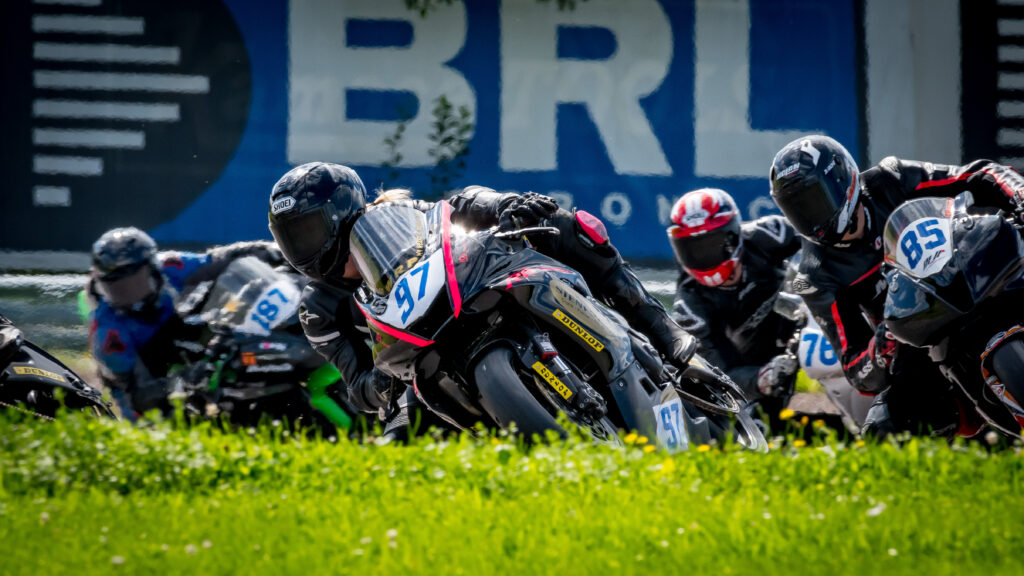
Jessica adds: “It’s not just the bike that needs to be in top shape – I do too. I’ve been bad with food, so having a meal prep sponsor this year is a huge relief. You have to eat well and rest properly. These weekends take a toll.”
When race time comes, all the effort pays off. “Right before I head out, I almost want to throw up from nerves – but as soon as I’m on the bike, it’s all gone. It’s an incredible feeling that’s hard to describe,” says Jessica.
Saga agrees: “All the nerves disappear the second those lights go on. I’m very determined on the track – but also really happy when others do well. I might not be a cutthroat competitor, but I am obsessed with progress.”
International dreams – and Swedish reality
Racing internationally remains a dream for many – but it’s an expensive one. When the FIM Women’s World Cup was announced, both Jessica and Saga were interested – until they saw the entry fee: 300,000 SEK.
They’ve trained in southern Europe and confirm the standard abroad is much higher than in Sweden. While international series like IDM or European track days are tempting, their realistic goal is to hone their skills abroad – and keep serious competition based in Sweden.
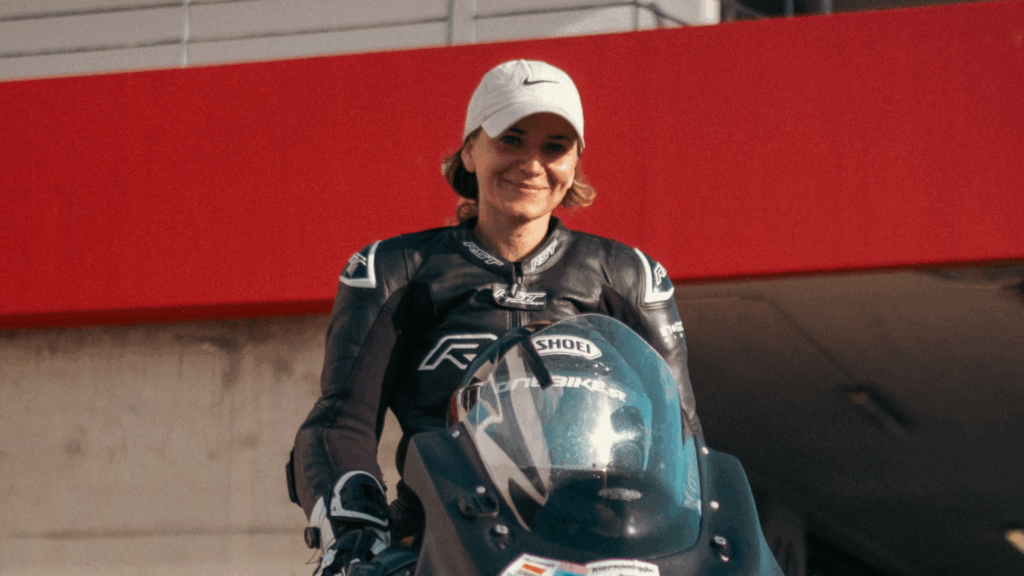
Advice from Sweden’s fastest girls
For maximum racing time per krona, both riders recommend club championships (like SMC Sport) or endurance – though the latter is tougher on parts. Ultimately, the best value depends on what format you enjoy most. In terms of bikes, both agree the Yamaha R6 is the most competitive and easiest to handle in the 600cc class.
Their top advice for getting started? Go to a track day.
“Nobody is too slow for the track,” says Saga. “I’ve seen pensioners on Harleys. Just show up as you are, with whatever bike you’ve got. Track days are the perfect place to start. I wore a Gore-Tex suit at my first one.”
Jessica adds: “You can take it as far as you want – the key is just trying it and finding what suits you. I prefer sprints, while Saga thrives in long stints. But honestly – if I didn’t have roadracing, I don’t know what I’d do instead.”
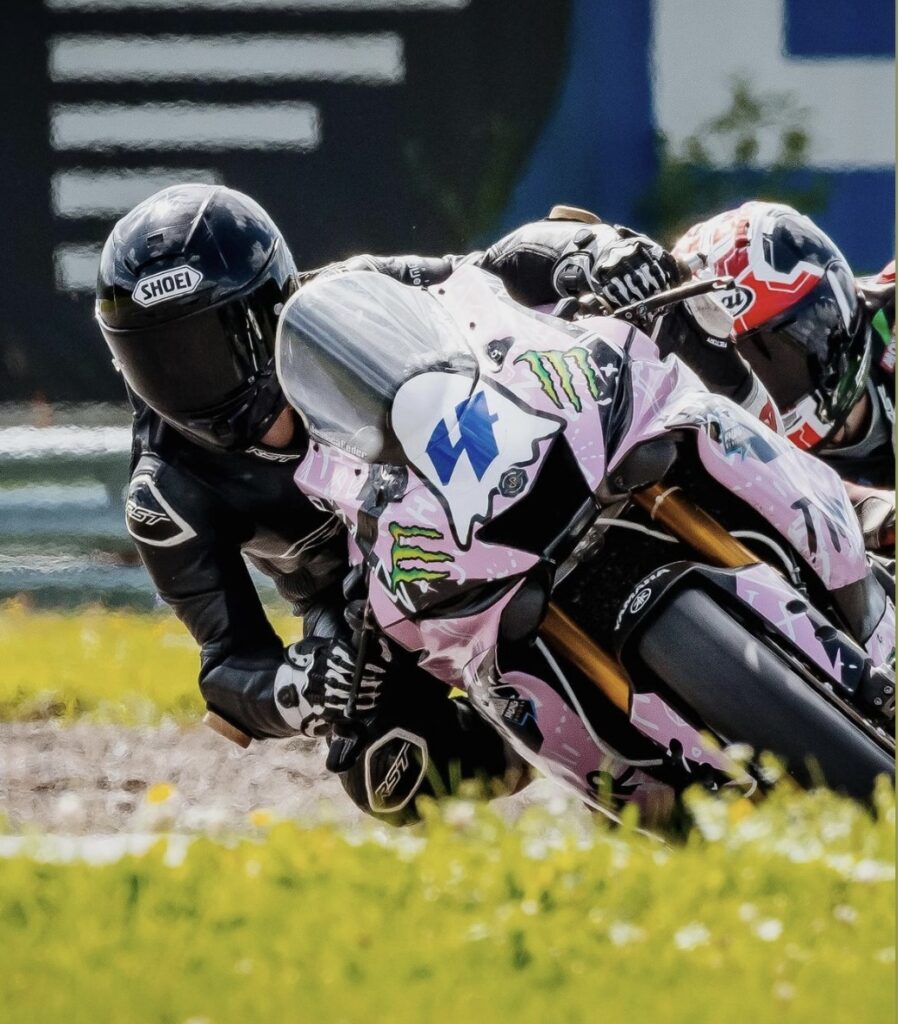
Reading between the lines, it’s clear both Jessica and Saga would feel lost without roadracing – not just for the thrill of riding, but for the warmth of the community.
For any girl or guy thinking about stepping into the world of motorsport, the message is clear:
Just start. You’ll get the help you need – as long as you’re open to receiving it. Take one step at a time, and before you know it, you might be lining up beside Saga and Jessica, visor down, eyes fixed on the lights.
Jessica thanks her 2025 sponsors: Alvetool, Jaypeas, Printster Design, Onebike, and Photosbymagnus
Saga thanks her 2025 sponsors: Grandurismo, Hammarö Stenforum, Onebike, WRP Racing Products, Motoevent Spain, and Dunlop

